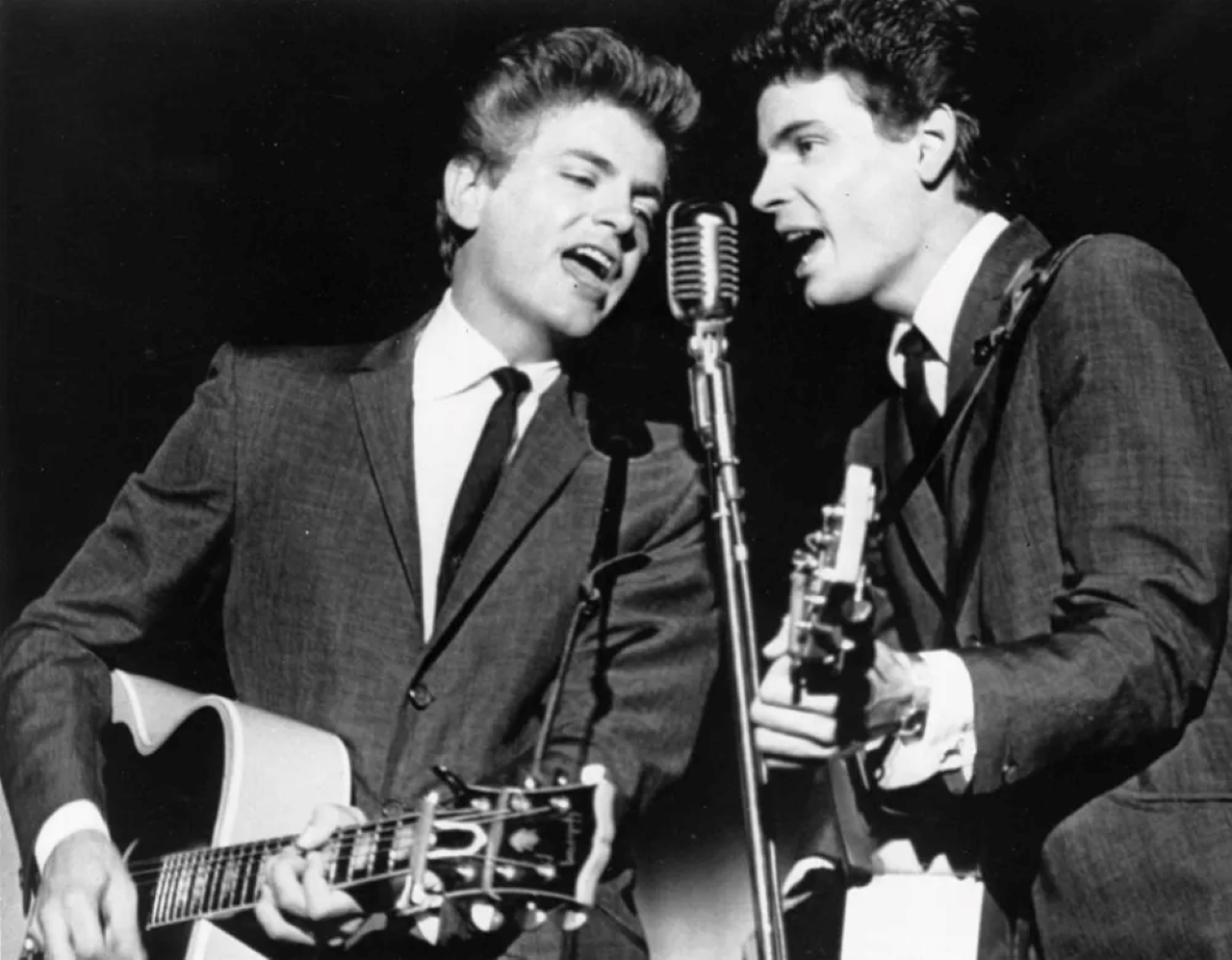🎶 “Wake Up Little Susie” – The Night Innocence Shook America
It was October 14, 1957, when The Everly Brothers woke up to find their names at the very top of the Billboard Hot 100. Their single, “Wake Up Little Susie,” had climbed to #1 across America — a playful, toe-tapping song about a teenage couple who accidentally fall asleep at the drive-in and wake up to a scandal.
But behind that cheerful rhythm and jangling guitars lay a quiet revolution — one that captured the fragile balance between innocence, rebellion, and the rising energy of rock & roll.

🌙 The Story Behind the Song
Written by husband-and-wife songwriting team Felice and Boudleaux Bryant, “Wake Up Little Susie” was inspired by something incredibly simple — the idea of a date gone wrong.
Two young lovers go to the movies, fall asleep, and wake up past curfew. When they realize how late it is, panic sets in. The humor and tension of that situation — the fear of what their parents might think, the risk of being misunderstood — made the song instantly relatable to millions of American teens in the 1950s.
But there was more. The Everly Brothers — Don and Phil Everly, sons of country musicians — brought perfect two-part harmonies, polished guitar work, and a country-rock sound that was both pure and rebellious.
Their voices blended so naturally that it felt like one person singing with two hearts.
⚡ When Harmony Became a Weapon
In 1957, America was changing fast. Elvis Presley had already broken through the cultural ceiling, but rock & roll still carried a sense of danger — something parents didn’t quite trust.
“Wake Up Little Susie” felt harmless on the surface. Yet, radio stations in some southern states banned it, believing the song’s story implied something improper.
Of course, the song was nothing of the sort — just a snapshot of teenage panic, not passion. But that controversy only helped it grow. Teenagers rushed to buy the single, amused that adults didn’t get the joke.
For the Everly Brothers, it was the perfect paradox: a clean image with a dangerous edge.
🎤 The Sound That Changed the Sixties Before They Began
Musically, “Wake Up Little Susie” marked the moment when country met pop and gave birth to something new.
The acoustic guitar rhythm was crisp, steady, and infectious. The harmonies — rooted in Appalachian gospel — glided over a driving beat that made rock & roll feel sophisticated for the first time.
Years later, Paul McCartney would say that The Beatles “learned every Everly Brothers song note for note.”
Their influence is all over the early Beatles harmonies — “Please Please Me,” “Love Me Do,” even “If I Fell.”
Simon & Garfunkel, The Beach Boys, and The Byrds would all echo the Everly sound — melodic, clean, full of emotion.
💿 A New Kind of Stardom
By the end of 1957, “Wake Up Little Susie” had sold over two million copies.
It wasn’t just a hit — it was a cultural turning point.
The Everly Brothers became America’s sweethearts — polished yet youthful, polite yet modern.
They wore matching suits, sang in perfect harmony, and carried an emotional honesty that crossed generations.
For parents, they were respectable.
For teenagers, they were cool.
And for the music industry, they were gold.
🌟 The Legacy of Two Voices
Listening to the song today, it’s easy to smile at its innocence — a relic from a time when “falling asleep at the drive-in” could still shock America.
But beneath that simplicity lies genius.
The Everly Brothers created a sound that defined what pop harmony could be — bright, honest, and timeless.
They bridged the gap between country and rock, setting the stage for everything from The Beatles to Fleetwood Mac.
Their music taught the world that emotion didn’t need to shout — it could whisper, blend, and resonate.